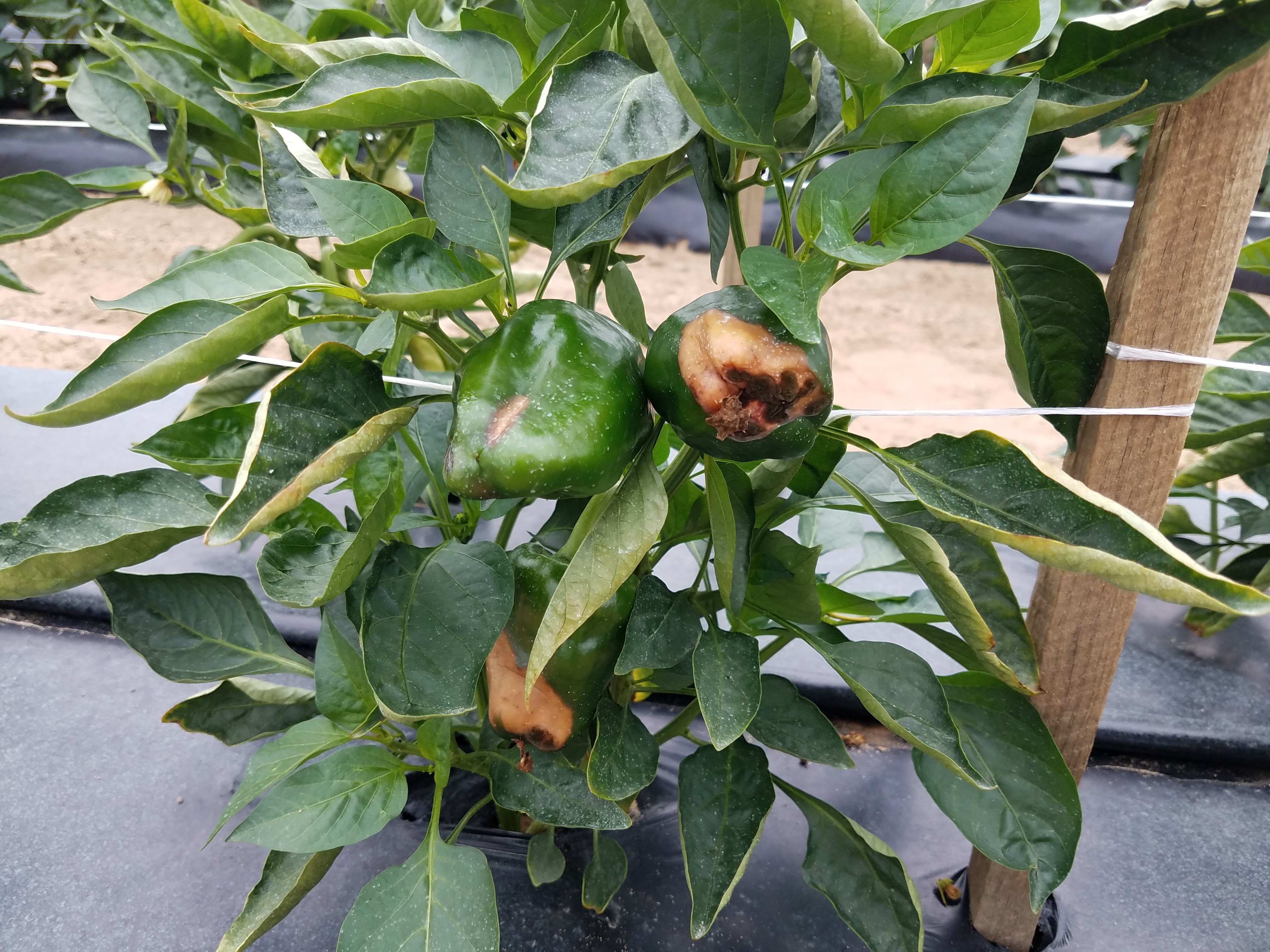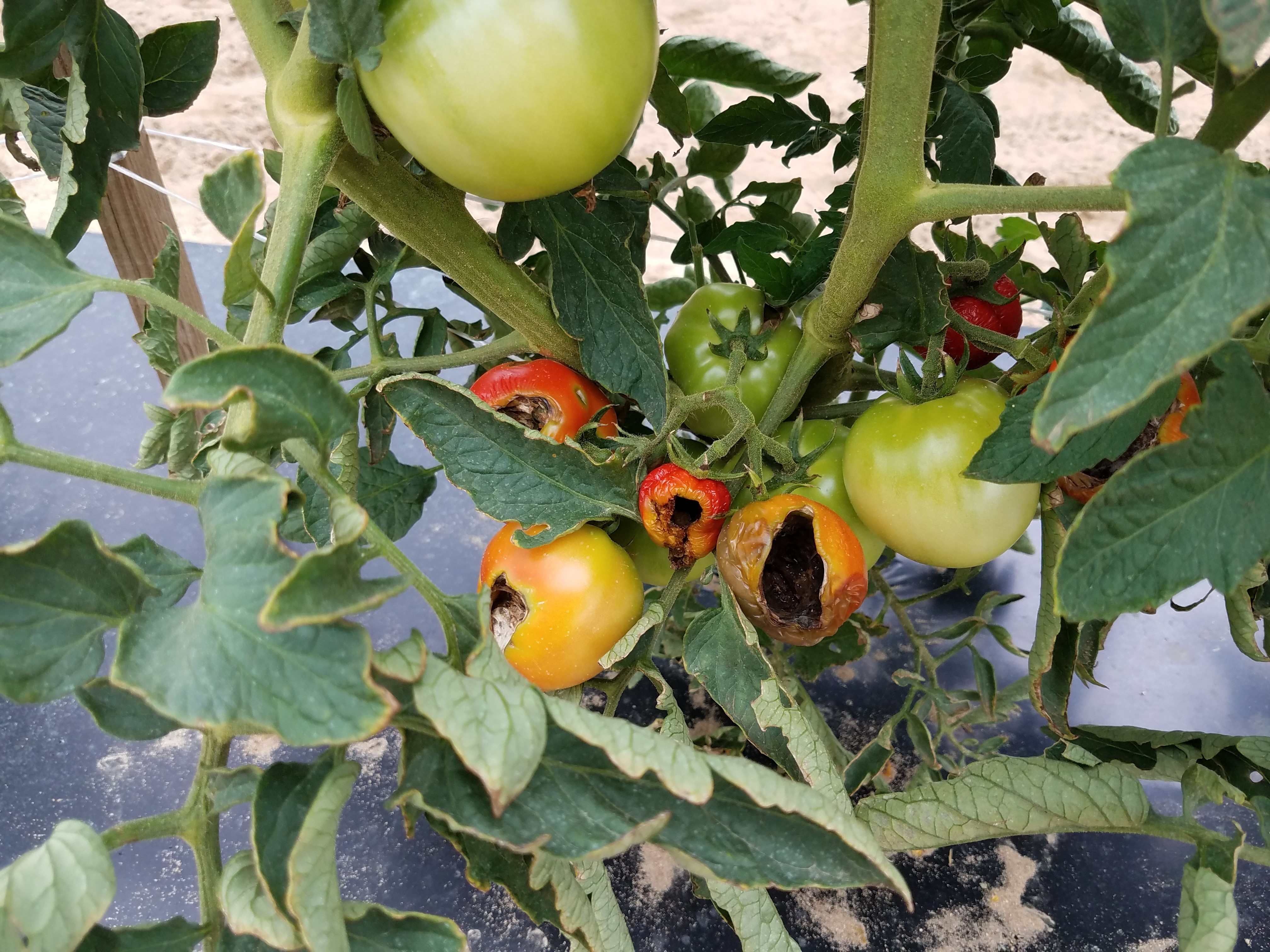Southwest Michigan vegetable update – July 22, 2020
Last week’s quiet gave way to this week’s storm.

Weather
Temperatures for the week at the Southwest Michigan Research and Extension Center ranged from 77 to 90 degrees Fahrenheit for highs and 61 to 69 F for lows. The 50 F degree-day units are at 1,557 for 2020 compared to 1,380 for 2019 and 1,532 for the five-year average. Rainfall across the area for the week ranged from 0.33 to 1.25 inches.
Crop reports
Much has happened over the past week, which is not surprising for this time of year.
Virus symptoms are now present in vine crops. Symptoms include leaf curling, distortion and color mottling. Fruit will also be bumpy and distorted and yellow squash fruit will have solid green patches or green rings. Several viruses affect cucurbits and they can only be determined through laboratory tests. Aphids transmit viruses and once a plant is infected, there is nothing growers can do. The best thing is to plant virus tolerant types, especially late in the season when virus pressure is heaviest.
Phytophthora symptoms are also evident in many squash and pumpkin plantings. Our rainy spring created many wet spots in poorly drained areas and that is where Phytophthora will first make an appearance. Plants will wilt and die as the fungus attacks the root and fruit will began to break down and develop a fuzzy, white growth. Avoid harvesting in these areas and those areas immediately adjacent, since what looks like clean fruit can be harvested only to have it develop symptoms in transit and be rejected. Those areas should be avoided for future cucurbit plantings.

Downy mildew in cucumbers is still a problem and the weather Sunday, July 19, was great for further spread. It is now showing up in small, backyard garden settings.
Herbicide damage is showing up in some vine crops. Look for general wilting and poor growth. Dig up the plant trying to keep roots intact. Often, there will be a noticeable stem constriction between the roots and leaves. There may even be secondary roots developing above the constriction. Plants will easily break at the constriction. This is often due to too much rain after applying a preemergent herbicide.
Many preemergent herbicides need rain to work them into the soil, but too much rain will push the herbicide into the root zone of the economic plant and effect its growth. A half-inch of rain is ideal; 1.5 inches is too much. Varieties will vary in sensitivity and susceptible varieties will have good plants and dying plants in the same row due to slightly different planting depths and soil types.

With the recent hot weather, it would not be surprising to have blossom end rot become a problem on peppers and tomatoes. Blossom end rot is a calcium deficiency generally related to poor watering practices or high temperatures. Calcium is not very mobile in the plant and the hardest place for it to get to is the tip of rapidly expanding fruit. Foliar applications have little effect, but if you are going to apply calcium due to its low mobility, you have to start early in plant growth and continue through the season. Tomato hornworms are also now present.

On a more positive note, volume bell pepper and eggplant harvest has begun. Some early watermelon is being harvested mostly for local sales. General watermelon harvest will begin next week.
My biggest problem currently at the Southwest Michigan Research and Extension Center is crows. They are pecking the fruit on my tomato and pepper trials. We have tried various deterrents to no avail. They come in the evening when no one is here. I would appreciate any control ideas readers may have. Send them to me at goldy@msu.edu.




 Print
Print Email
Email

